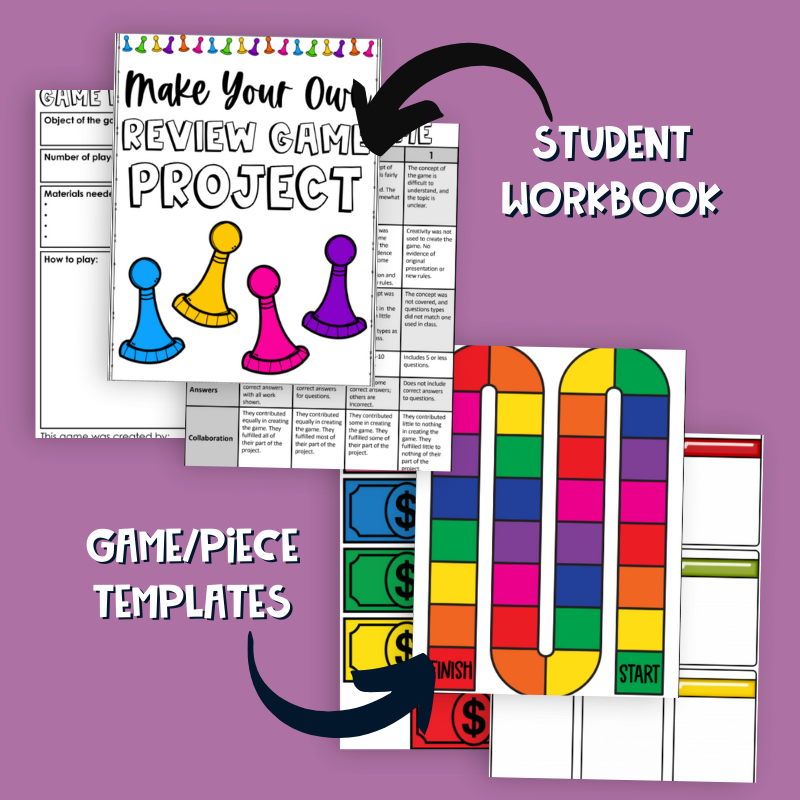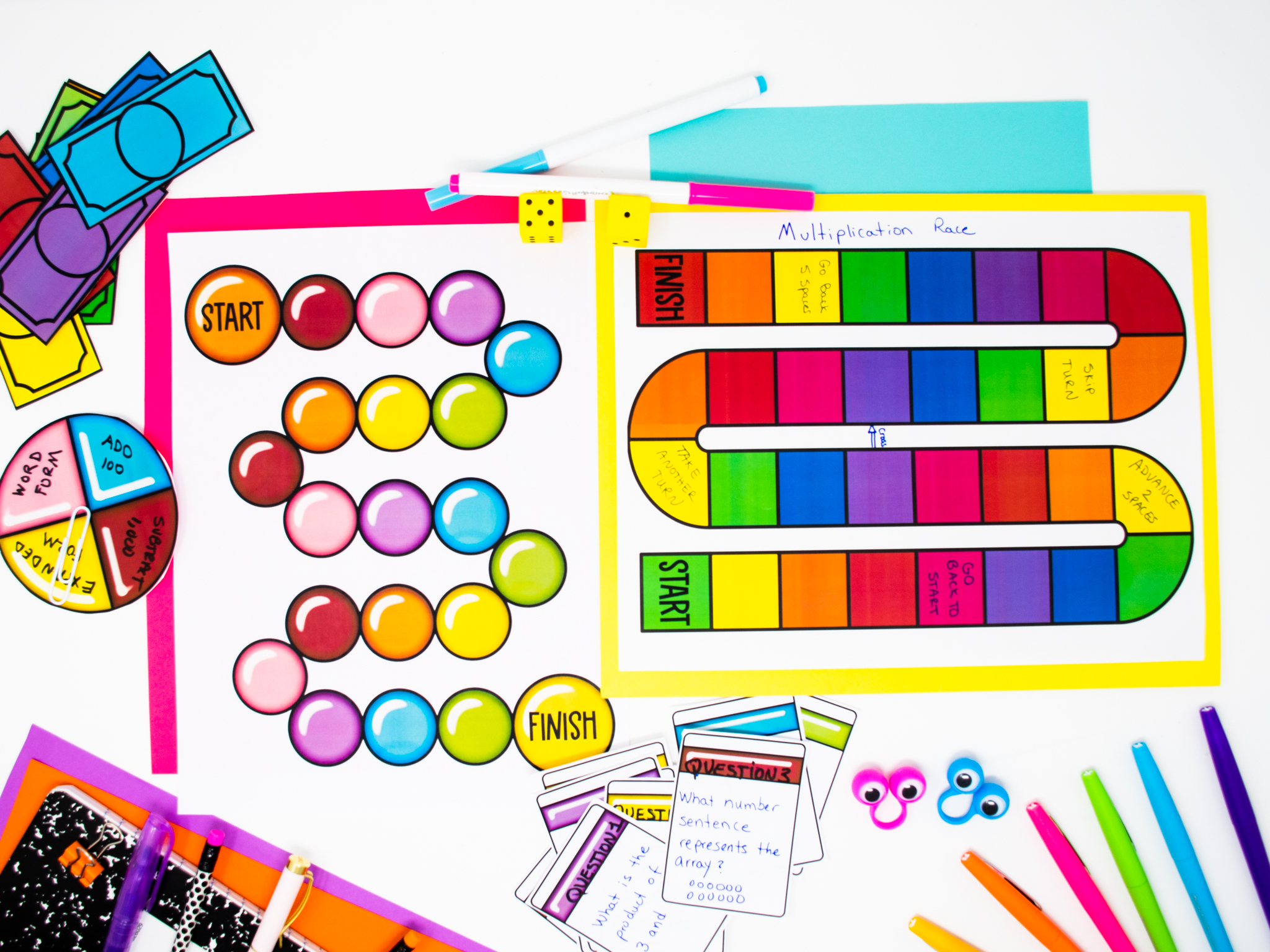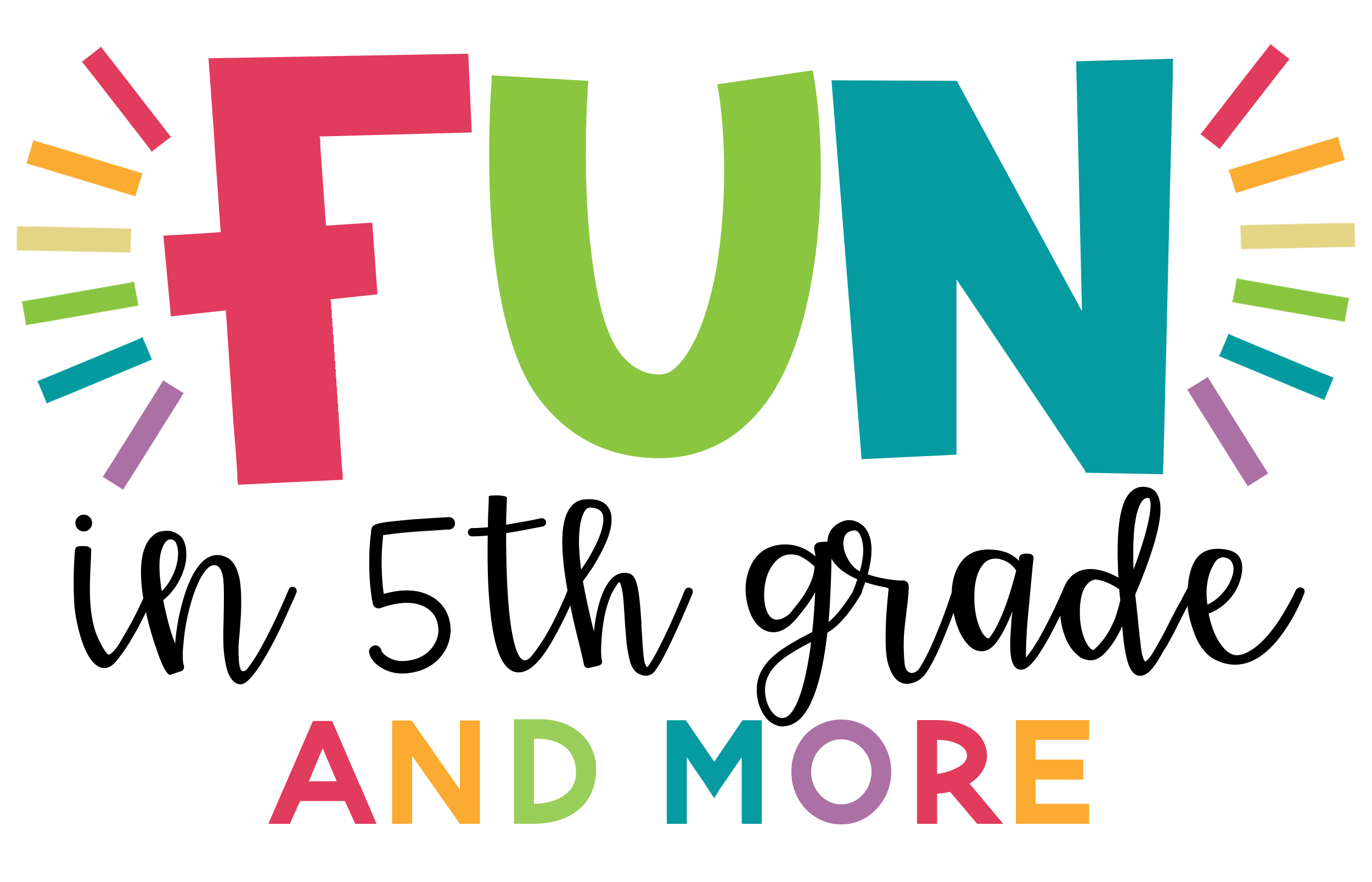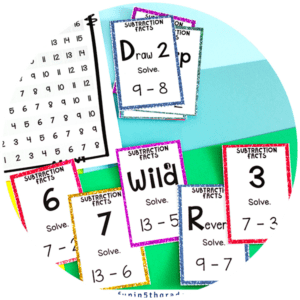As part of your end-of-the year traditions and projects, consider this Create-Your-Own Review Game project! (We’ve also included a project workbook with FREE RUBRIC + game templates)
I don’t know if you could tell, but over here at Fun in 5th Grade, we love games. We love competition games and collaboration games.
We love games that teach and games that review, and we even like games that are just fun for the sake of being fun!
So, if there is one way that we suggest finishing off the school year in your upper elementary classroom this year, it is with a Create-Your-Own Review Game project!

Yep, we aren’t giving you a game this time, instead, we are encouraging you and your students to make your own games covering skills, topics, and standards that align with your class goals.
Clear and Easy Steps

Now, we want to make this as easy as possible, so we are going to lay out clear steps for setting up this Create-Your-Own Review Game activity with students, AND we are giving you a project workbook to help you and your students get started. This project workbook includes teacher info, game ideas, workbook pages for students, a rubric, and several templates students can use as they create their games!
Are you excited? We definitely are, and we can’t wait to see what your students come up with.
Step #1: Picking Topics, Skills, or Standards
Begin by brainstorming a list of topics, skills, or standards you want to cover at the end of the year.
At this point in the school year, we aren’t introducing any new information, and we want students to have enough background and knowledge in the topic, skill, or standard to be able to create a game based that can act as a review of that standard or topic.
If you really want to get students involved, do this brainstorming as a class, and let students vote or pick which topics, skills, or standards they are most interested in creating games for.
Step #2: Assign the Topics, Skills, or Standards
Once the topics, skills, or standards are chosen, assign them to students. You can decide if you want several students working on the same topics or if you want to try to have a game created for every idea on the list. This can be an individual project, or students can work in groups or pairs.
When assigning topics, you may consider using one of these methods…
- A random draw
- Assigning based on student strengths or areas students need improvement
- A lottery-style drawing
- Make ‘em play for it. Use some of the task cards from your many decks of task cards and play a game to determine who gets to pick their topic first.
Step #3: Creating Questions
As students begin to create their games, they will start by creating a list of questions that could be used within their game.
As your students brainstorm, consider giving them this list of types of questions for inspiration.
- Situations
- Fact-based
- Definitions
- Theme-based
- Short Questions
- Long Questions
- Passages
- Puzzles
- Riddles
- Examples
- Nonexamples
Step #4: Planning the Game
Once students have brainstormed questions, they will start developing a game. The game can be a completely new invention, or they can model it off of something they already know. Don’t forget that the project workbook comes with templates students can use to create things such as cards, gameboards, spinners, etc.

Special Note: Now that many students are more familiar with digital products allow students to create digital games if they want, or they can create good ol’ paper, pencil, and poster games.
Step #5: Creating the Game and Instructions
Spend a couple of days creating the games in class. As part of the game, students will need game pieces, questions or cards, a board or way to play, and (most importantly) instructions!
Reminder: In addition to creating questions, students also need to be sure to include answer keys!
Step #6: Testing Games and Providing Feedback
One step students frequently forget when creating a game is creating good instructions. For this reason, taking the time to test games before students are done creating is important. Have one day dedicated to exchanging games with other groups, playing each other’s games, and providing feedback.
Make sure to find some time for students to implement the feedback before playing the games during the last few weeks of school.
Step #7: Playing the Games
Once the games are completed, spend the last few weeks playing the games created by students. You don’t have to play every day but set aside a few days for students to rotate through and try out the games created by their classmates.
Remember, within the project workbook, we have included a FREE RUBRIC for you to use with this Create-Your-Own Review Game project!

Bonuses and Benefits
This activity serves a number of purposes and positives.
- Students review information they learned throughout the year.
- Students are engaged in the last few weeks of the school year (even though the weather is nice and the excitement of summer break is looming)
- Students are creating!
- Students are demonstrating knowledge.
- Students are helping others learn and review.
- Students are collaborating.

Bonus Benefit: If any of the games are particularly good, ask students if you can use them in class the following years, or if their idea or examples are good, but their gameboard is just so-so, ask if you can use their ideas to create additional classroom resources in the future.

Students are awesome creators, and when given the chance, they can really surprise us with their creativity and innovative tendencies. This Create-Your-Own Game Activity is perfect because it graduates students from being consumers and players of games to being creators of games.
Want to add even more options for your students? You could try some of my editable templates for Game Show games and U-Know games. You could have students making you games that you could use for years to come!
We would love to hear about your students’ games, so if you have any pictures of students’ games you want to share or any really cool ideas from students, please send them our way or post them in the comments below. Find out more about using games in the classroom in this post.





